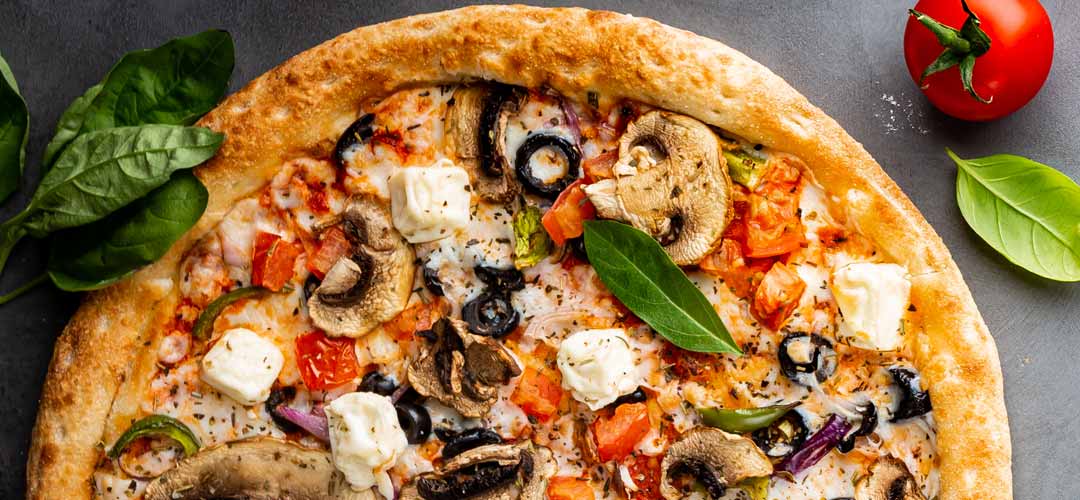
In a month overflowing with holidays and observances – including Valentines’ Day, Black History Month, Presidents’ Day, and Groundhog Day, to name a few – one of the more light-hearted occasions in February is National Pizza Day, which falls every year on February 9 in the United States, Canada, and the United Kingdom. While the origin of National Pizza Day (first observed around the year 2000) is unclear, the “pizza” we enjoy today is the product of a long and storied history.
The earliest mention of pizza in literature is in Virgil’s epic poem, The Aeneid. In Book VII, Aeneas and his crew stop to rest in Rome while devouring “fateful circles of crust” crowned “with fruits of the field.” Pizza as we know it was born in the late 18th century in the waterfront city of Naples, Italy. Naples was flooded with laborers who needed food that was inexpensive to make, quick to eat, and easy to carry. Those simple Neapolitan pizzas were dismissed as peasant food, but this perception changed with a visit to Naples by Italy’s King Umberto I and Queen Margherita in 1889. After tiring of elaborate French cuisine during their travels, the King and Queen ordered pizzas from the city’s Pizzeria Brandi (founded in 1760). The Queen’s favorite was one bearing the colors of the Italian flag – red tomatoes, soft white cheese, and fresh green basil. The Queen’s favor elevated pizza’s stature, and is memorialized in “margherita-style” pizzas today.
The popularity of pizza spread slowly across the Atlantic with European migration to the United States in the early 1900s, but then exploded after World War II. Allied soldiers craved the pizzas they “discovered” in Italy. Advances in home ovens and freezers led to the rise of “convenience” foods such as the frozen pizza. And the rising number of automobiles made it easier to enjoy freshly-baked “circles of crust” by home delivery – with the first Domino’s Pizza (then named “Dominik’s”) speeding orders to customers in Michigan in 1960.
According to the U.S. Department of Agriculture, roughly 13% of the United States population (age 2 and up) consumed pizza on any given day in 2010. Various news sources (and pizza chains) report that the most popular days for people to have pizza are: Halloween, Super Bowl Sunday (another unofficial February holiday), the night before Thanksgiving, and New Year’s Eve/ New Year’s Day. Despite pizza being a simple and convenient food, pizza has surprisingly been the subject to various areas of litigation over the years.
- In 2004, members of the Italian Parliament proposed a bill specifying the types of flour, yeast, cheese, salt, and tomatoes to be used in an “authentic” pizza margherita. Although that bill was tabled in 2009, the European Union awarded “special status” to Neapolitan pizza, meaning that a pie can only be advertised and sold as a genuine “pizza napoletana” if it meets specific measurements, and contains specific ingredients from the Naples region itself.
- Later, in the 2014 case of Patterson’s v. Domino’s Pizza, LLC, the California Supreme Court issued a ruling affecting pizzeria (and other restaurant) franchisees across the State. In that case, an employee working in a Domino’s Pizza store sued her employer and Domino’s (two separate companies) after she was allegedly sexually assaulted by a manager. Both the manager and the plaintiff were employed by the franchisee, and not by Domino’s (the franchisor).
The Supreme Court recognized that the franchisee had a contractual relationship with Domino’s that required the franchisee to maintain Domino’s quality standards, and to pay royalty fees for the right to use Domino’s trademarks and advertising. However, because the manager (and every other employee at the franchisee’s store) was not a direct employee of Domino’s itself, Domino’s could not be held liable for the manager’s misconduct.
- In 2017, the U.S. Food and Drug Administration enacted menu labeling regulations that defined pizza larger than “personal size” as a multiple-serving item, with each slice being a single-serving portion. As a result, pizzeria chains must cut their pies into equal slices, so that customers can receive accurate calorie and other nutritional information for each slice they eat.
- Also, in the 2019 case of Robles v Domino’s Pizza, LLC, the U.S. 9th Circuit Court found that because Domino’s is a place of “public accommodation” under the Americans with Disabilities Act (“ADA”), Domino’s was obligated to make its website and mobile application (or “app”) fully accessible to blind or vision-impaired customers through auxiliary means. Otherwise, such customers would not have full access to the food ordering options, store locator information, and promotional discounts made available to other Domino’s customers.
While the verdict is still out there on whether pineapple is an appropriate pizza topping, we recognize that pizza has a special place in our hearts and bellies. Whether you end up enjoying a heart-shaped pizza for Valentine’s Day, a stack of extra-larges with family and friends for the Super Bowl, or a deep-dish pie for your upcoming Oscar night, Bradley, Gmelich + Wellerstein LLP hopes we delivered a little more flavor to your February. Buon appetito!

